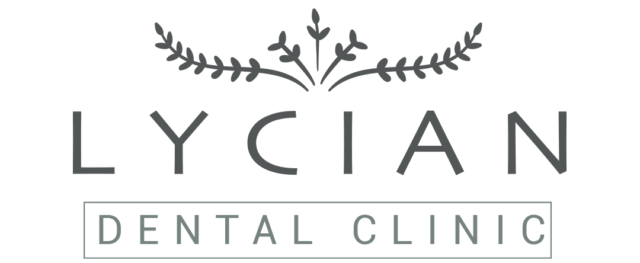TMJ treatment disorders are a group of conditions affecting the jaw joint and the muscles controlling jaw movement. These disorders can cause pain, discomfort, and functional limitations, impacting a person’s quality of life. Addressing TMJ disorders involves a range of dental techniques and procedures, each tailored to the specific needs of the patient. This article explores the various approaches used in treating TMJ disorders and highlights the importance of specialized care in managing these complex conditions.
Understanding TMJ Disorders
The temporomandibular joint connects the jawbone to the skull and is responsible for movements required for speaking, chewing, and yawning. TMJ disorders can arise from several factors, including:
- Muscle Dysfunction: Myofascial pain involving the muscles that control jaw movement.
- Joint Derangement: Issues such as dislocated discs within the joint.
- Arthritis: Inflammatory or degenerative conditions affecting the joint.
- Trauma or Injury: Physical injury to the jaw or joint.
Symptoms of TMJ disorders may include jaw pain, headaches, earaches, facial pain, difficulty chewing, and a clicking or popping sound when opening the mouth. Effective treatment requires a multidisciplinary approach, often involving dental, medical, and physical therapy professionals.
Diagnostic Techniques
Accurate diagnosis is crucial for developing an effective treatment plan. Techniques used in diagnosing TMJ disorders include:
- Clinical Examination:
- Assessing jaw movement, listening for sounds, and palpating the muscles around the jaw.
- Imaging Studies:
- X-rays: Provide a basic view of the joint and surrounding bones.
- MRI (Magnetic Resonance Imaging): Offers detailed images of soft tissues, including discs and muscles.
- CT (Computed Tomography): Provides detailed images of the bone structure.
- Electromyography (EMG):
- Measures muscle activity and identifies muscle dysfunction.
Non-Surgical Treatment Options
Non-surgical treatments are often the first line of defense in managing TMJ disorders. These include:
- Medications:
- Pain Relievers and Anti-Inflammatories: Over-the-counter or prescription medications to reduce pain and inflammation.
- Muscle Relaxants: Help relieve muscle tension and spasms.
- Antidepressants: Low doses can sometimes help manage pain and reduce stress.
- Physical Therapy:
- Exercises to strengthen jaw muscles, improve range of motion, and reduce pain.
- Heat and cold therapy to manage symptoms.
- Occlusal Appliances:
- Splints or Mouthguards: Custom-made devices worn over the teeth to reduce clenching and grinding, alleviate muscle tension, and reposition the jaw.
- Behavioral Therapies:
- Stress management techniques and cognitive behavioral therapy to address habits like teeth grinding and jaw clenching.
- Injections:
- Botox (Botulinum Toxin): Injections into the jaw muscles can reduce pain and improve function by relaxing muscle spasms.
- Steroid Injections: Corticosteroids injected into the joint to reduce inflammation and pain.
Advanced and Surgical Treatments
When non-surgical treatments are insufficient, advanced and surgical interventions may be necessary. These procedures include:
- Arthrocentesis:
- A minimally invasive procedure where the joint is washed out with sterile fluid to remove debris and inflammatory byproducts. This helps improve joint function and reduce pain.
- Arthroscopy:
- A surgical procedure where a small camera (arthroscope) is inserted into the joint through a small incision. This allows the surgeon to diagnose and treat various joint problems, such as removing inflamed tissue or realigning the disc.
- Open-Joint Surgery (Arthrotomy):
- For severe cases, open surgery may be required to repair or replace the joint. This involves a larger incision and is used when there are significant structural problems within the joint.
- Modified Condylotomy:
- An indirect approach to TMJ surgery where the mandible is adjusted through an incision made in the lower jawbone, not directly into the joint. This can relieve pain and improve function without directly addressing the joint itself.
- Total Joint Replacement:
- In cases of severe joint damage or degeneration, total joint replacement with a prosthetic joint may be necessary. This complex procedure is typically reserved for patients who have not responded to other treatments.
Multidisciplinary Approach
Effective management of TMJ disorders often requires a multidisciplinary approach involving various healthcare professionals, including dentists, oral surgeons, physical therapists, and pain management specialists. Collaboration among these professionals ensures comprehensive care that addresses all aspects of the disorder.
The Role of Specialized Clinics
Specialized clinics, like the Lycian Clinic in Turkey, play a pivotal role in the treatment of TMJ disorders. The Lycian Clinic exemplifies excellence in TMJ treatment through several key attributes:
- Advanced Diagnostic Tools:
- The clinic employs state-of-the-art imaging and diagnostic equipment to accurately assess TMJ disorders, ensuring precise and effective treatment plans.
- Experienced Specialists:
- The team at Lycian Clinic includes highly trained and experienced professionals in TMJ treatment, providing expert care tailored to each patient’s unique needs.
- Comprehensive Treatment Plans:
- The clinic offers a full spectrum of TMJ treatments, from conservative non-surgical options to advanced surgical interventions. This ensures that patients receive the most appropriate care for their condition.
- Patient-Centered Care:
- The Lycian Clinic prioritizes patient comfort and satisfaction, providing personalized treatment plans and compassionate care throughout the treatment journey.
- Holistic Approach:
- Recognizing the multifaceted nature of TMJ disorders, the clinic adopts a holistic approach that includes physical therapy, behavioral therapy, and medical management to address all contributing factors.
Conclusion
TMJ disorders require a multifaceted approach to treatment, incorporating a range of dental techniques and procedures to alleviate pain and restore function. From non-surgical interventions like medications, physical therapy, and occlusal appliances to advanced surgical procedures, the treatment of TMJ disorders is comprehensive and patient-specific. Specialized clinics like the Lycian Clinic in Turkey exemplify excellence in TMJ care, offering advanced diagnostic tools, experienced specialists, and personalized treatment plans that ensure optimal outcomes for patients. Through a combination of expertise, advanced technology, and a patient-centered approach, effective management of TMJ disorders is achievable, improving the quality of life for those affected by these complex conditions.

